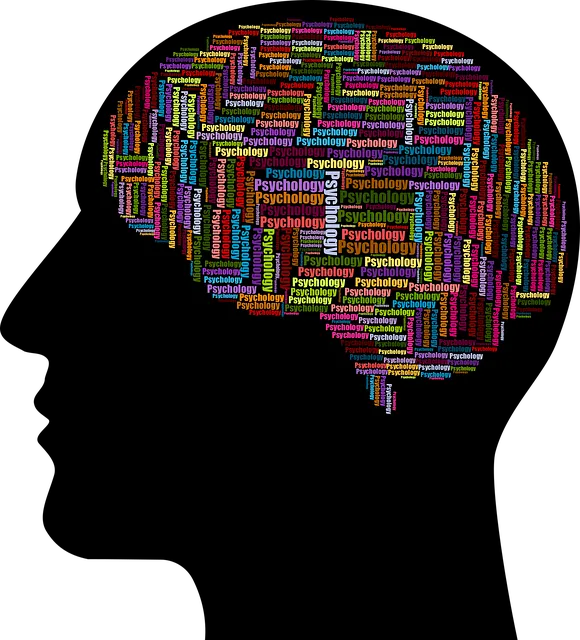In today's digital age, mental wellness apps are gaining popularity as accessible and personalized tools for care. The text highlights how Longmont Kaiser Permanente's behavioral health phone number sets a standard by offering immediate professional support. These apps integrate mood tracking, customized coping mechanisms, mindfulness exercises, and secure messaging with healthcare professionals. They also provide meditation guides, breathing techniques, positive affirmations, and educational resources tailored to diverse cultural needs. User-friendly interfaces are crucial for stress relief, encouraging consistent app usage. Integrating evidence-based therapies like CBT enhances effectiveness while normalizing access to care. Effective marketing strategies, leveraging healthcare networks and compassionate cultivation practices, ensure these apps cater to diverse behavioral health needs, comparable to services provided by Longmont Kaiser Permanente.
Mental wellness apps have emerged as powerful tools in addressing contemporary mental health challenges. With the increasing adoption of digital solutions, understanding the need for these applications is more critical than ever. This article explores key aspects of mental wellness app development, including evidence-based therapies and user-friendly design. It delves into strategies for marketing and accessibility, highlighting best practices such as those implemented by Longmont Kaiser Permanente’s behavioral health phone service. By 2025, the global mental health app market is projected to reach USD 13.4 billion, underscoring the growing demand for innovative solutions.
- Understanding the Need for Mental Wellness Apps
- Key Features of Effective Mental Health Applications
- Designing User-Friendly Interfaces for Stress Relief Apps
- Integrating Evidence-Based Therapies into Digital Platforms
- Marketing and Accessibility Strategies for Behavioral Health Apps
Understanding the Need for Mental Wellness Apps

In today’s fast-paced world, mental wellness is a paramount concern for individuals seeking balance and stability in their lives. The rise in demand for accessible and personalized support has prompted innovative solutions, with mental wellness apps emerging as a prominent trend. One notable example is Kaiser Permanente’s behavioral health phone number in Longmont, which offers immediate access to professional assistance, highlighting the growing need for such digital interventions.
These applications cater to a diverse range of users by providing tools for stress reduction methods, conflict resolution techniques, and even risk assessment for mental health professionals. By utilizing technology, they democratize access to care, ensuring that support is readily available to those who might otherwise face barriers in traditional healthcare settings. This shift towards digital wellness solutions is a testament to the evolving landscape of mental healthcare, where apps play a crucial role in promoting and maintaining overall well-being.
Key Features of Effective Mental Health Applications

Effective mental health applications prioritize user engagement and personalized experiences. Key features include integrated mood tracking, allowing users to record daily emotions and identify patterns. This data can trigger customized coping mechanisms and mindfulness exercises tailored to individual needs. Additionally, these apps often incorporate secure messaging systems facilitating communication with Longmont Kaiser Permanente behavioral health professionals for immediate support.
Emotional well-being promotion techniques like meditation guides, breathing exercises, and positive affirmations are integral components. Moreover, incorporating educational resources on mental health topics enhances user understanding and empowers self-care. Healthcare provider cultural competency training ensures these apps cater to diverse populations effectively. Lastly, integrating social features that connect users with peers can foster a sense of community and support, contributing to overall mental wellness.
Designing User-Friendly Interfaces for Stress Relief Apps

Designing user-friendly interfaces is paramount for stress relief apps, especially when considering the sensitive nature of mental wellness content. Apps like those offered by Longmont Kaiser Permanente’s behavioral health services aim to provide accessible and engaging tools for emotional healing processes. A well-designed interface should be intuitive, allowing users to effortlessly navigate through various features such as guided meditation sessions, breathing exercises, or even a mental wellness journaling exercise guidance section.
This user experience (UX) design approach ensures that individuals seeking social skills training or those looking to explore their emotions in a safe digital environment are not overwhelmed. By prioritizing simplicity and clarity, app developers can encourage consistent usage, fostering a sense of comfort and control over one’s mental well-being. This is particularly crucial in a world where digital tools for emotional support have become increasingly popular.
Integrating Evidence-Based Therapies into Digital Platforms

Integrating evidence-based therapies into digital platforms is a game-changer in mental wellness app development. Longmont Kaiser Permanente behavioral health phone number seekers increasingly turn to technology for support, making it essential for apps to offer effective, research-backed treatments. Platforms can incorporate techniques like mindfulness meditation, compassion cultivation practices, and cognitive-behavioral therapy (CBT) to address a range of common mental health concerns.
By leveraging these evidence-based methods, apps can enhance user experiences and promote meaningful self-care practices. Mental health awareness benefits from this integration as it normalizes access to care and encourages individuals to take proactive steps toward their well-being. Moreover, digital platforms allow for personalized experiences tailored to individual needs, making therapy more accessible and engaging than ever before.
Marketing and Accessibility Strategies for Behavioral Health Apps

Marketing and accessibility are key aspects to consider when developing a mental wellness app, especially when targeting users with behavioral health needs. One effective strategy is to leverage existing healthcare networks, such as reaching out to organizations like Longmont Kaiser Permanente and utilizing their phone numbers for promotion. This ensures that your target audience, those seeking behavioral health support, can easily access the app through trusted sources.
Additionally, incorporating compassionate cultivation practices within the app’s design can enhance user engagement. Promoting stress management workshops or communication strategies via in-app notifications or social media campaigns will attract users interested in self-care and personal growth. By combining these marketing techniques with a user-friendly interface, you can create an inclusive environment that caters to diverse mental wellness needs, making your app a valuable resource for those seeking behavioral health support, like the services offered by Longmont Kaiser Permanente.
Mental wellness apps are becoming increasingly important in addressing the growing need for accessible and affordable behavioral health services. As evidenced by the success of Longmont Kaiser Permanente’s behavioral health phone number, digital platforms offer a convenient way to connect individuals with much-needed support. By incorporating user-friendly interfaces, evidence-based therapies, and effective marketing strategies, these apps can significantly contribute to improving mental health outcomes. Moving forward, continued development and integration of these tools will play a pivotal role in revolutionizing the way we approach mental wellness care.



